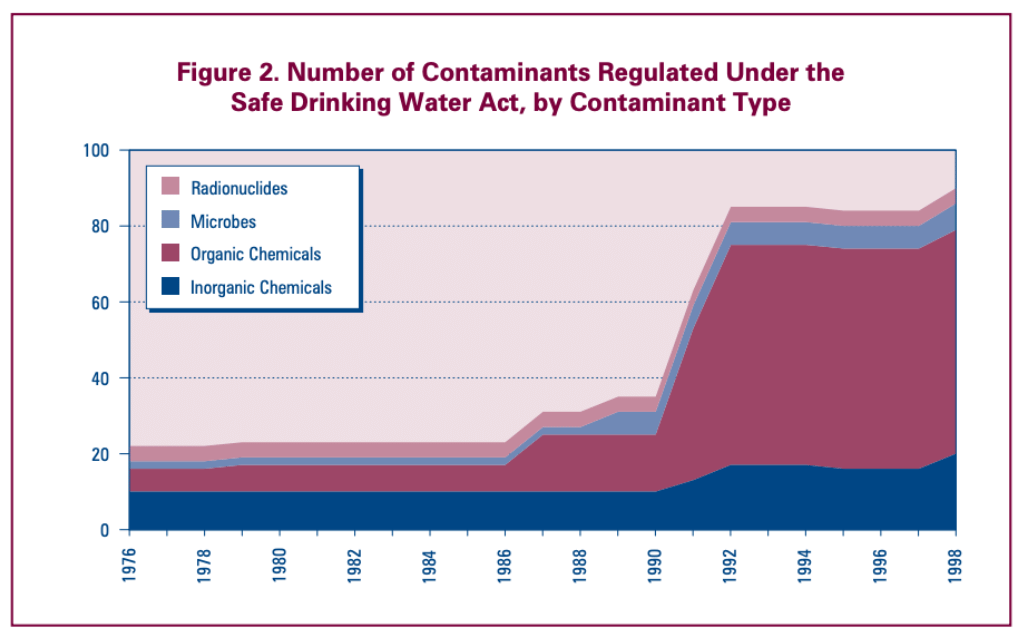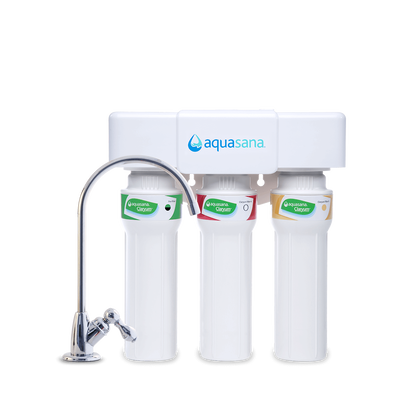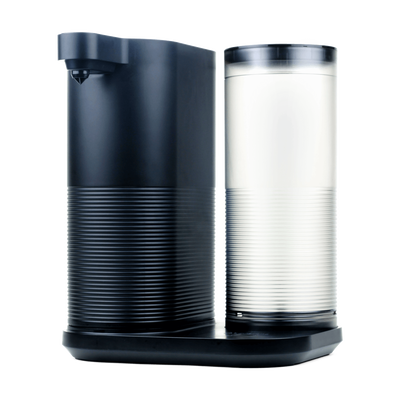While you can do your own test using kits available for purchase, they may not be as comprehensive as the free version you can get from the government. Alternatively, if you’re looking for general information about contaminants commonly found in water across the U.S., we’ve compiled this information below.
What Contaminants are in Tap Water?
No matter the source, contaminants can be found in drinking water. Here are some of the most common contaminants found in public U.S. tap water supplies:
Chlorine and Chloramine
Chlorine and chloramine are used to treat and disinfect tap water. This is because water comes from a variety of sources such as lakes and wells, and chlorine is used to kill parasites, bacteria, and viruses that may be found in the water source. Similarly, chloramine is added to water to kill germs. However, they can also create harmful byproducts or remain in trace amounts that can cause irritation to your skin, hair, and eyes.
Fluoride
Fluoride has been added to drinking water since 1945 after scientists found that there was a relationship between communities with high levels of fluoride in their water supply and decreased cavities. The CDC states that drinking fluorinated water reduces cavities by nearly 25%, although there’s also been research that long-term exposure can contribute to a bone disease called skeletal fluorosis that causes pain and damage to bones. Today, the maximum amount of fluoride allowed in drinking water is 4.0 mg/L, but it is up to local governments to decide whether or not fluoride is added to drinking water.
Minerals
One of the many reasons water has so many health benefits is because of its minerals. Minerals found in water support bone and digestive health. Minerals found in tap water are copper, sodium, potassium, magnesium, calcium, iron, zinc, and phosphorus. However, some tap water contains too many minerals in an issue known as hard water. In hard water, a high concentration of minerals can cause scale to build up in pipes and appliances resulting in damage to your home while also leaving residue on dishes and drying out your hair and skin.
Nitrates
Nitrates are natural chemicals found in soil, air, and water. They are also found in septic systems, animal feedlots, industrial waste, or food processing waste. It is odorless and tasteless, but can cause major health risks if too much is consumed. According to the CDC, high levels of nitrate can decrease the body’s ability to carry oxygen to tissues. Nitrates can be removed from water through ion exchange, distillation, or filtration systems that use reverse osmosis and are certified to remove nitrates.
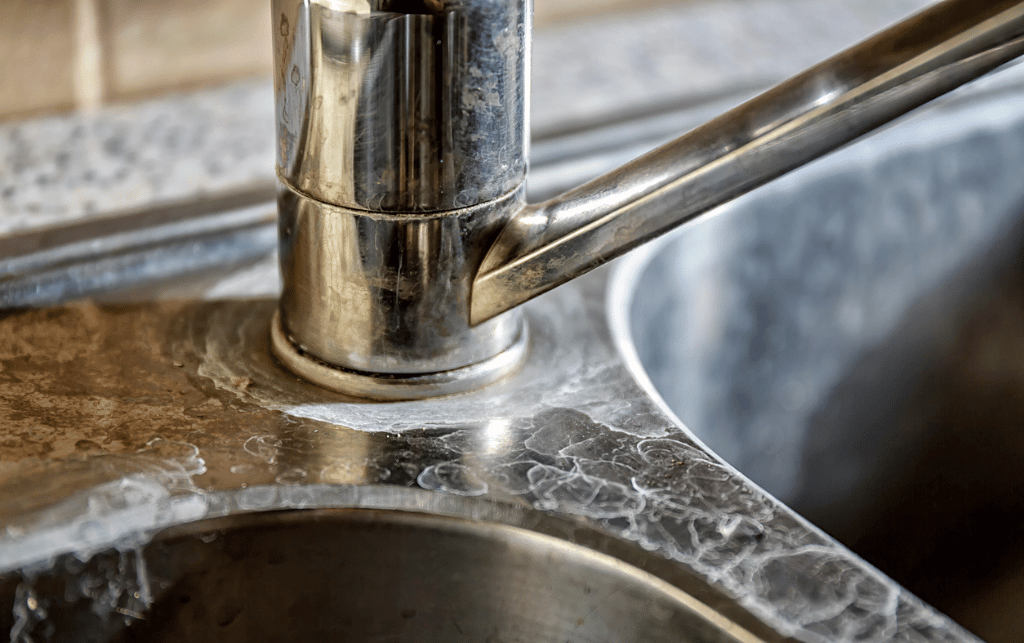
UNDER SINK WATER FILTER
OptimH2O® Reverse Osmosis + Claryum®
Combines Claryum® and reverse osmosis technology to remove 88 contaminants including fluoride and arsenic.
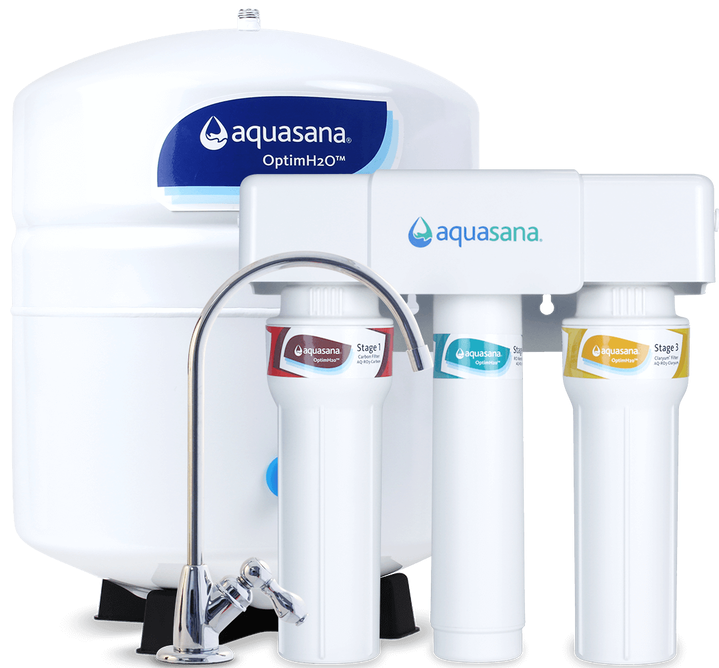
Arsenic
Another common contaminant in water is arsenic. It is a natural component of the Earth’s crust and occurs naturally in many minerals. Arsenic from soil and rocks can dissolve into groundwater, contaminating the water source. According to the Minnesota Department of Health, drinking water with arsenic is associated with diabetes and an increased risk of various cancers. Oftentimes, the health impacts of consuming water contaminated with arsenic develop many years after exposure. Arsenic can be removed by reverse osmosis, ultrafiltration, distillation, or iron exchange.
Microorganisms
Microorganisms include bacteria, viruses, and parasites and can be found in water. Some have negative impacts on human health like E. Coli or Giardia. This is why water goes through a disinfection process and is closely monitored before being deemed safe for human consumption. To remove microorganisms from contaminated water you can boil or filter your water. Many water filters can remove parasites such as Cryptosporidium and Giardia from drinking water.

How to Improve the Safety of Tap Water
If the safety of tap water is still a concern there are alternatives. Some people may turn to bottled water. However, bottled water is costly, harmful to the environment, and is actually less regulated than tap water which means it may be less safe by comparison. A water filtration system is a better alternative to bottled water, as it can improve the quality and safety of your tap water and is better for the environment.
Water filtration systems can come in many different formats such as an under sink, countertop, shower, or whole house system that provides clean water from every faucet.
To answer the question, most tap water is considered safe to drink according to government standards. But insufficient standards and the growing discovery of new information about contaminants raise concerns. Ultimately, it’s up to you to decide if you’re ok with what’s in your tap water. To ensure it’s safe, you can request a water quality report and view the results. If any contaminants concern you, consider using a water filter to improve the quality of your tap water at home.
